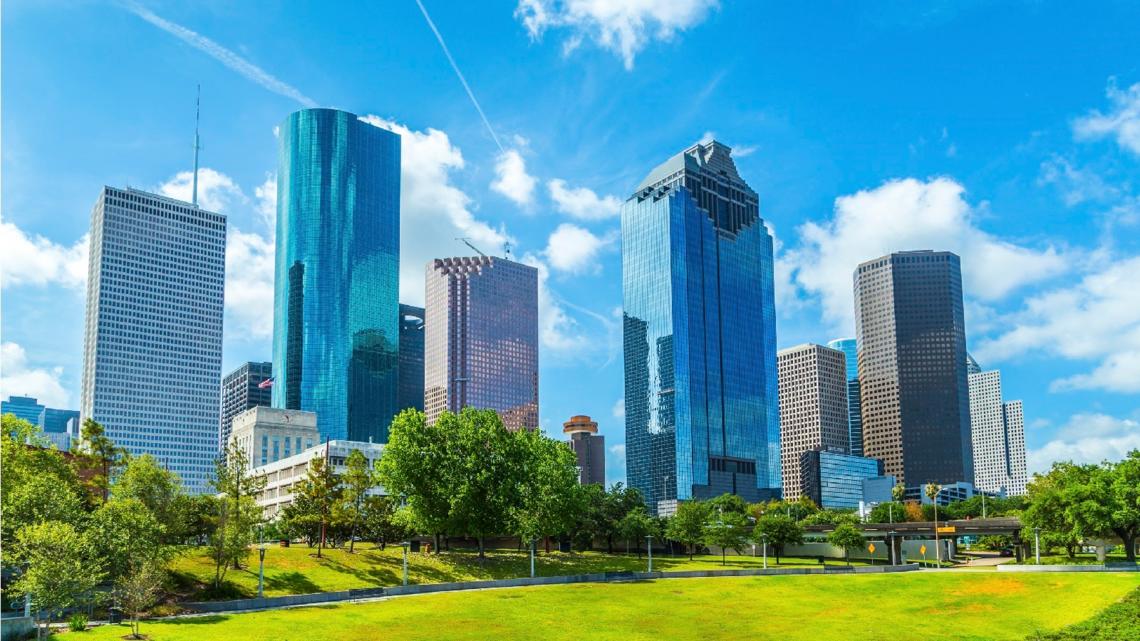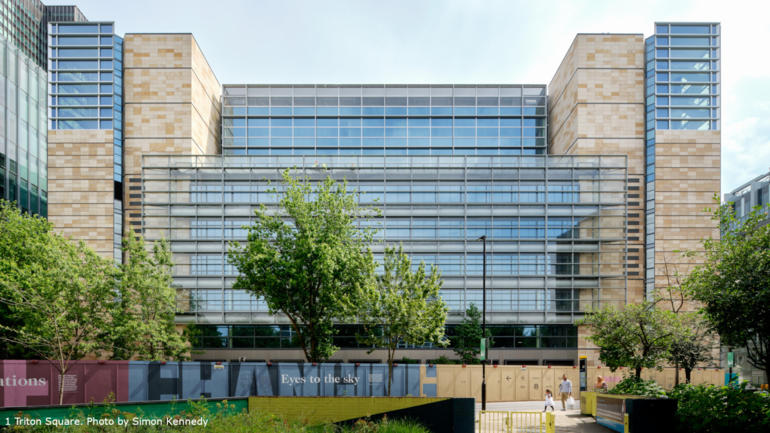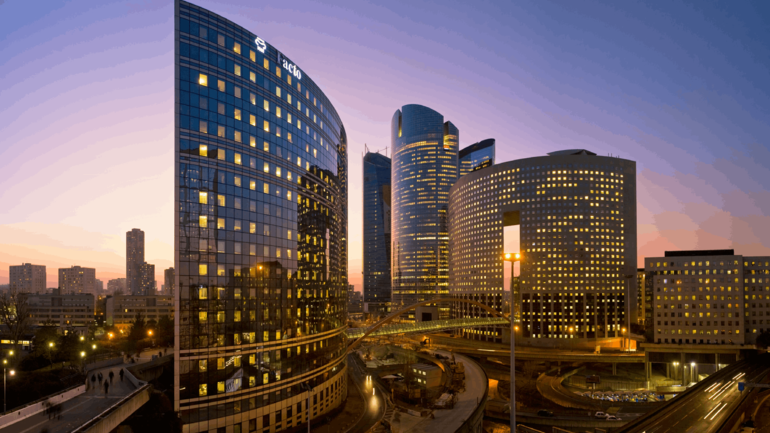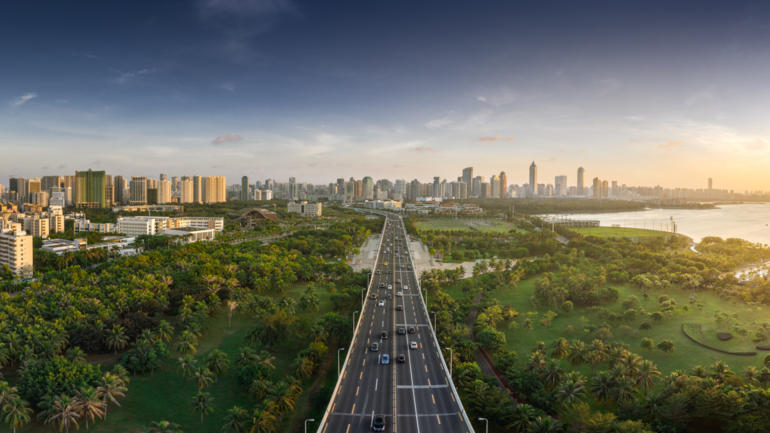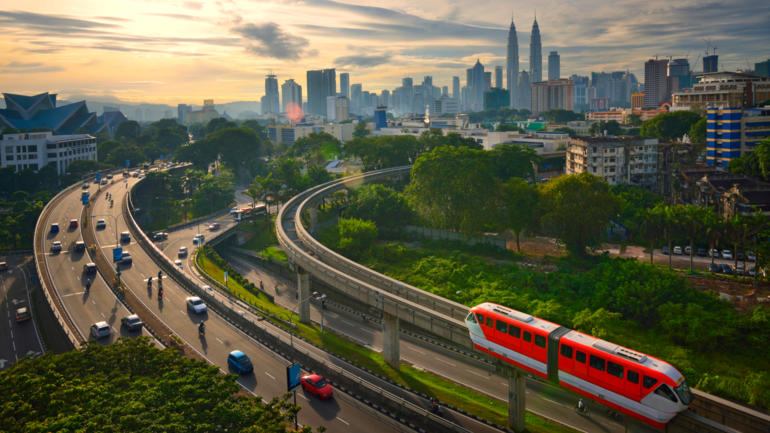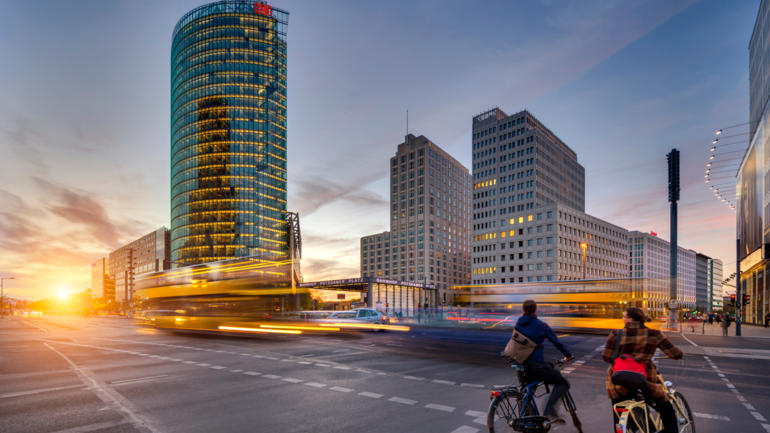Saint-Gobain sets out its CO2 roadmap for achieving carbon neutrality. The roadmap incorporates the Group’s new commitments through to 2030 in terms of reducing not only its direct and indirect carbon dioxide emissions, but also the emissions along its value chain. These new targets for 2030 have been validated by the Science-Based Targets (SBT) initiative1 which considers them aligned with the Group’s 2050 net-zero commitment. To meet its targets, Saint-Gobain will dedicate a targeted capital expenditure and R&D budget of around €100 million per year until 2030. This approach will be the basis for the decisions that the Group will take to achieve carbon neutrality by 2050.
Saint-Gobain’s response to climate change
Besides its efforts to become carbon neutral in its operations, Saint-Gobain provides solutions to its customers and end-users to address the climate and environmental challenges that they face. In the construction industry, which accounts for around 40% of global CO2 emissions, Saint-Gobain develops and markets solutions to improve the energy efficiency in buildings, and solutions with a reduced carbon footprint – such as for light construction – designed to replace traditional, more carbon-intensive heavy building materials.
Elsewhere, through its High Performance Solutions segment, the Group helps the transport industry in its transition thanks to lightweight and more energy efficient solutions. It also aids industrial producers by providing them with solutions to reduce energy consumption in their manufacturing processes.
On September 23, 2019, in New York, Saint-Gobain formalized its support for the UN Global Compact’s “Business Ambition for 1.5°C”. In doing so, it committed to achieving carbon neutrality, or net-zero CO2 emissions, by no later than 2050. As a consequence, the Group will reduce its carbon emissions to a maximum by 2050 and employ measures to absorb any residual emissions.
Yesterday, Saint-Gobain unveiled its new ambitions and the main axes of its CO2 roadmap towards carbon neutrality in 2050, which comprises several stages: the 2025 targets confirmed by the Group represent the first milestone, which is supplemented by new targets for 2030.
Intensified efforts
This commitment is part of an approach pursued over many years, which has seen Saint-Gobain set out formal targets to reduce its environmental footprint, in particular a reduction in CO2 emissions (Scope 1 + 2) by 20% between 2010 and 2025 at iso-production. In 2019 Saint-Gobain achieved a 14.5% reduction versus 2010 on this basis, leaving the Group well-placed to meet its 2025 target. The reduction targets for 2030 reflect how the Group is accelerating and enhancing its efforts. After having validated Saint-Gobain’s 2025 ambition in 2019, the SBT initiative has now validated the Group’s targets for 2030, recognizing how the Group has accelerated and deepened its ambitions in line with its target to become carbon neutral by 2050.
New 2030 targets
- Reduction in its direct and indirect CO2 emissions (scope 1 + 2) to 9 million tons, i.e., of 33%2 in absolute terms compared with 2017;
- Reduction in its scope 3 CO2 emissions of 16% in absolute terms, for all relevant categories for Saint-Gobain3, compared to 2017.
Levers for action
In order to reduce its CO2 emissions and achieve carbon neutrality, the Group is focusing its efforts on four key levers:
- Optimization and reduction of its energy use.
- Innovation in its processes, both industrial and product design.
- Transition towards carbon-free energy.
- Mobilization of suppliers and new initiatives in transport.
For any residual emissions the Group intends to investigate carbon capture and sequestration solutions.
Intensified commitment
The Group is rolling out measures to support its roadmap towards to carbon neutrality. CSR objectives now represent a larger share of long-term management incentive criteria: their weighting is raised from 15% to 20%, with CO2 objectives increasing from 5% to 10%. In addition, two internal carbon prices are used: €30 per ton for industrial investments and €100 per ton for R&D investment in breakthrough technology. Finally, the Group will allocate a budget of around €100 million per year until 2030 to targeted capital expenditure and R&D investments in order to achieve its targets.
Pierre-André de Chalendar, Chairman and Chief Executive Officer of Saint-Gobain, commented: “Our commitment to carbon neutrality guides our actions and our decisions at all levels of the organization. The long-term approach needed is aligned with that of our stakeholders. We have an important responsibility as a major industrial group and committed actor, and finding solutions to environmental challenges has been at the heart of our strategy for many years now. In addition to working towards its own carbon neutrality, Saint-Gobain makes a very significant positive contribution to our environment and our markets through products, solutions and services that help our customers transition to a low-carbon economy. Our insulating solutions sold in one year enable the avoidance of over 100 times the Group’s greenhouse gas emissions, which represents the prevention of over 1,200 million tons CO2 equivalent over their lifespan.”
Benoit Bazin, Chief Operating Officer, added: “For businesses like ours, achieving carbon neutrality in 2050 means taking action today. 2030 is just around the corner and the decade ahead of us is crucial. In addition to ongoing improvement and operational excellence programs, we deploy R&D efforts and make targeted investments which will enable us to further accelerate our action thanks to disruptive innovations. Our employees are fully committed to the cause and more than ready to take on this challenge.”
The CO2 roadmap is embedded in the company’s environmental strategy
These CO2 targets reflect an acceleration and expansion in the Group’s scope of action compared to its 2025 goals. They are part of a series of new commitments for 2030 in other key areas of its environmental strategy:
- Natural resources and circular economy: 80% reduction in non-recovered production waste4; 30% increase in virgin raw materials avoided5;
- Water: 50% reduction in industrial water withdrawal6, zero discharge in drought areas7;
- Packaging: 100% recyclable packaging, containing more than 30% recycled or biosourced materials;
- Product portfolio: third-party verified Environmental Product Declarations (EPD), based on Life Cycle Analysis (LCA) for 100% of the company’s product ranges.
To read the full press release and find out more about Saint-Gobain's commitments and path to carbon neutrality, please visit https://www.saint-gobain.com/en/net-zero-carbon.
References:
1Science-Based Targets, a joint initiative of CDP, the UN Global Compact, the World Resources Institute (WRI) and the World Wildlife Fund (WWF), and one of the We Mean Business coalition commitments, defines and promotes best practice in science-based target setting, and independently assesses and approves companies’ targets to accelerate the transition to a low-carbon economy.
2Reduction of 30% in absolute terms compared to actual emissions in 2017, and of 33% compared to 2017 emissions as adjusted for acquisitions made between 2017 and the date on which the targets were validated.
3Purchased goods and services, energy-related activities, upstream and downstream transport and distribution, business travel and end-of-life treatment of products sold (categories validated by the SBT).
4Compared to 2017.
5In absolute terms, compared to 2017.
6For all sites, compared to 2017.
7Compared to 2017. Aqueduct’s tools map water risks such as floods, droughts, and stress, using open-source, peer-reviewed data. https://www.wri.org/aqueduct/about

